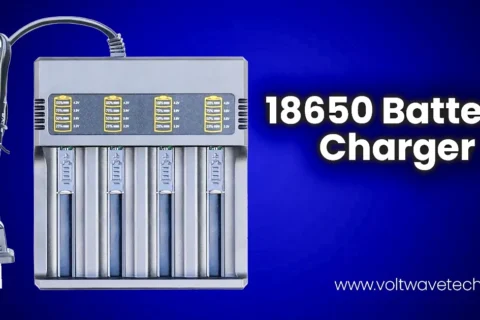What Is MPPT Solar Charge Controller?

In the domain of sustainable energy, solar power shines as a symbol of eco-friendliness and advancement. Central to the functionality of every solar energy setup resides a pivotal element the solar charge controller. Among the various types of charge controllers, the MPPT (Maximum Power Point Tracking) solar charge controller emerges as a game-changer, revolutionizing the efficiency and performance of solar energy systems. Let’s delve into the world of MPPT solar charge controllers, unraveling their intricacies, benefits, and transformative potential in the realm of solar energy.
What Is MPPT Solar Charge Controller?
MPPT solar charge controllers represent the epitome of efficiency in solar energy, leveraging cutting-edge technology to enhance the operation of solar power systems. By dynamically tracking and adjusting the maximum power point voltage of solar panels, MPPT controllers ensure optimal energy conversion and storage, maximizing the utilization of solar energy.
Key Components
At the core of an MPPT solar charge controller lie sophisticated electronic components designed to regulate voltage and current flow. These components include microprocessors, voltage sensors, and control circuits, working seamlessly to adapt to changing environmental conditions and solar panel outputs.
Importance of Efficiency
Efficiency is paramount in solar energy systems, and MPPT controllers excel in this aspect. By operating at peak efficiency levels, MPPT controllers minimize energy loss, maximize power output, and ensure consistent performance even in variable weather conditions.
Maximizing Solar Light Efficiency With On/Off Switch

How Does an MPPT Solar Charge Controller Work?
Operation Principles
The operation of an MPPT solar charge controller centers on the principle of maximum power point tracking. Through continuous monitoring and adjustment of voltage and current levels, MPPT controllers optimize the power output of solar panels, ensuring maximum energy harvest.
Maximum Power Point Tracking
The essence of MPPT technology lies in its ability to track the maximum power point voltage of solar panels in real time. By dynamically altering the operational voltage, MPPT controllers guarantee that solar panels function at their optimal efficiency, irrespective of environmental fluctuations.
Voltage and Current Regulation
MPPT controllers regulate both voltage and current, ensuring that the energy harvested from solar panels matches the charging requirements of batteries. This precise regulation minimizes energy wastage and maximizes the efficiency of solar power systems.
Efficiency in Energy Conversion
A distinguishing feature of MPPT controllers is their outstanding efficacy in transforming solar energy into usable electricity. By functioning at the maximum power point of solar panels, MPPT controllers optimize the conversion of energy, thereby maximizing the overall efficiency of solar power systems.
Differences Between MPPT and PWM Controllers
Comparative Analysis
While PWM (Pulse Width Modulation) controllers are a common alternative, they lack the dynamic tracking capabilities of MPPT controllers. Unlike PWM controllers, which only regulate current, MPPT controllers adjust both voltage and current, maximizing energy conversion and storage.
Advantages of MPPT
MPPT controllers offer several advantages over PWM controllers, including higher efficiency, greater adaptability to environmental conditions, and superior performance in maximizing power output from solar panels.
Limitations of PWM
Despite their widespread use, PWM controllers have certain limitations, particularly in scenarios where solar panel voltage exceeds battery voltage. PWM controllers may result in energy wastage and suboptimal performance compared to MPPT controllers.
Benefits of MPPT Charge Controllers
-
Increased Efficiency: MPPT controllers significantly enhance the efficiency of solar power systems, maximizing energy harvest and minimizing wastage. With MPPT technology, users can extract the maximum potential from their solar panels, optimizing power output and performance.
- Enhanced Performance: The superior performance of MPPT controllers translates into improved reliability and consistency in solar energy production. By operating at peak efficiency levels, MPPT controllers ensure consistent power output, even in challenging environmental conditions.
- Adaptability: An essential advantage of MPPT controllers is their adaptability to varying environmental conditions. Whether it’s cloudy weather or fluctuating sunlight intensity, MPPT controllers dynamically adjust to maximize energy harvest, ensuring reliable performance throughout the day.
-
Cost-Effectiveness: While MPPT controllers may entail higher upfront costs compared to PWM controllers, their long-term benefits far outweigh the initial investment. With increased efficiency and performance, MPPT controllers offer superior value and return on investment over their lifespan.
Conclusion
To conclude, MPPT solar charge controllers signify a substantial leap forward in solar power technology, providing unmatched efficiency and performance. As the global shift towards renewable energy persists, MPPT controllers will serve as pivotal tools in optimizing energy utilization and promoting sustainability. Embrace the potential of MPPT technology and set course towards a greener, more sustainable future.
This article aims to provide a comprehensive understanding of MPPT solar charge controllers, highlighting their significance in the realm of renewable energy. Whether you’re a solar enthusiast or a seasoned professional, unlocking the potential of MPPT controllers is key to harnessing the full power of solar energy.
Frequently Asked Questions
How does an MPPT controller improve efficiency?
An MPPT controller enhances the power output of solar panels by dynamically tracking and adjusting the maximum power point voltage. This optimization maximizes energy conversion and storage, ensuring efficient utilization of solar energy resources.
Can MPPT controllers be used in all solar systems?
Yes, MPPT controllers are compatible with various solar panel configurations and system sizes, making them suitable for a wide range of applications.
What are the drawbacks of MPPT controllers?
While MPPT controllers offer numerous benefits, they may be costlier than PWM controllers upfront. Additionally, their effectiveness may vary depending on environmental factors and system setup.
Are MPPT controllers compatible with all panels?
MPPT controllers are compatible with most types of solar panels, including monocrystalline, polycrystalline, and thin-film panels, ensuring versatility and compatibility in solar energy systems.
How do MPPT controllers contribute to energy savings?
By maximizing the efficiency of solar power systems, MPPT controllers help users reduce their reliance on grid electricity, leading to significant energy savings over time.
What maintenance is required for MPPT controllers?
MPPT controllers are compatible with various types of solar panels, such as monocrystalline, polycrystalline, and thin-film panels. This ensures versatility and compatibility in solar energy systems.




